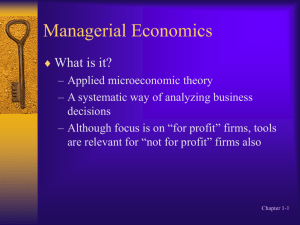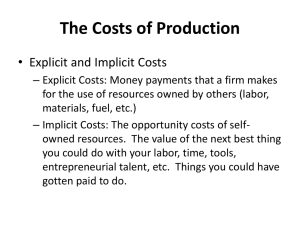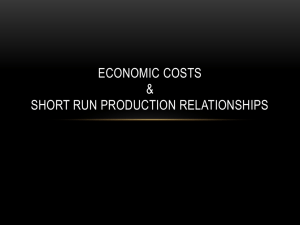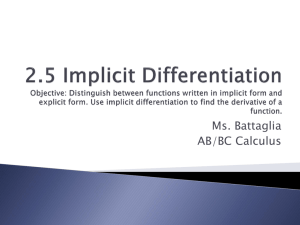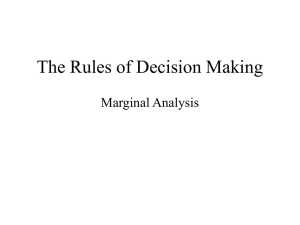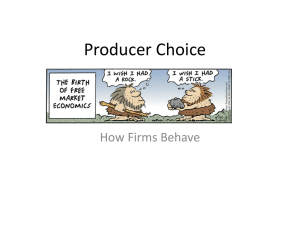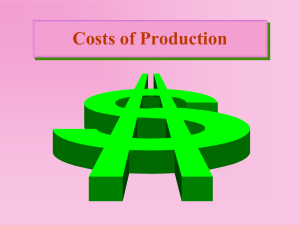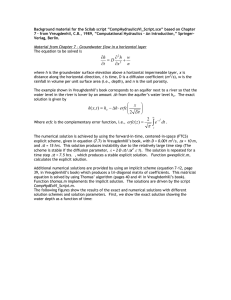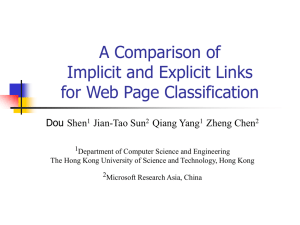The Costs of Production
advertisement
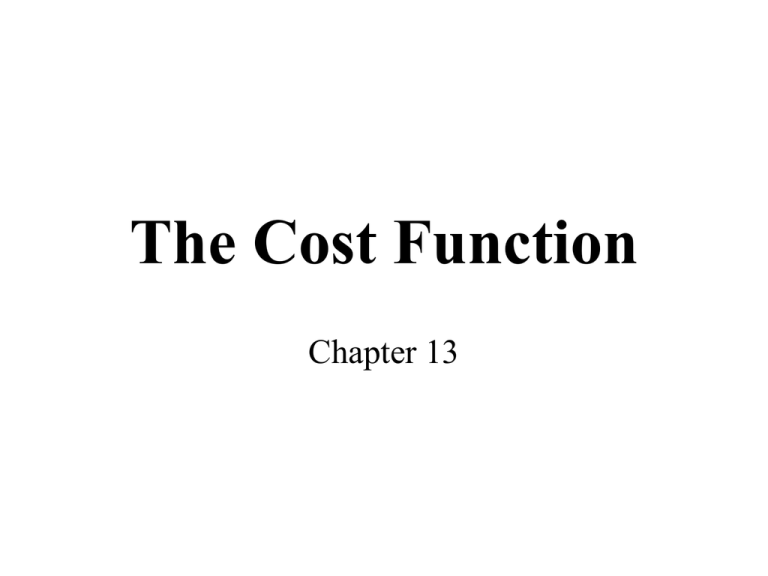
The Cost Function Chapter 13 The Production Function TP Shape of product curves determines the costs curves for a business AP MP Opportunity Costs • A firm’s cost of production must include all opportunity costs – Both explicit & implicit • Explicit costs- input costs that require a direct outlay of money – Example: attending college => tuition, books, etc…. • Implicit costs- input costs that do not require an outlay of money – Example: attending college => can’t work (loss of income) Economic Profit vs. Accounting Profit • Economic profit = total revenue - total costs – both explicit & implicit costs • Accounting profit = total revenue - explicit costs – no implicit costs! • Economic profit is smaller than accounting profit – Firms maximize economic profit – All cost curves include both implicit & explicit costs Economists vs. Accountants How an Economist Views a Firm Economic Profit $825 Total Revenue How an Accountant Views a Firm 1) Value of your time 2) Loss of interest income on money invested 3) Etc…. Implicit Costs $75 $900 Total opportunity costs $1,000 Explicit Costs $100 Accounting Profit Anything paid for in dollars Total Revenue $1,000 Explicit Costs $100 Costs of Production • Fixed costs - do not change with quantity of output – Rent on factory, utilities, insurance, etc…. (they are sunk!) • Variable costs - change with quantity of output – # workers, qty of steel, other inputs etc… • Marginal cost measures the increase in total cost that arises from an extra unit of production – How much does it cost to produce one additional unit of output? Costs of Production Variable Costs Fixed Costs Total Cost FC + VC = TC Fixed Costs (FC) Variable Costs (VC) Total Costs (TC) Marginal Costs = ∆ Total Cost Total Cost @ 3 units: $4.50 Total Cost @ 4 units: $5.40 Marginal Cost of 4th unit = $0.90 Worksheet: The Cost Function
